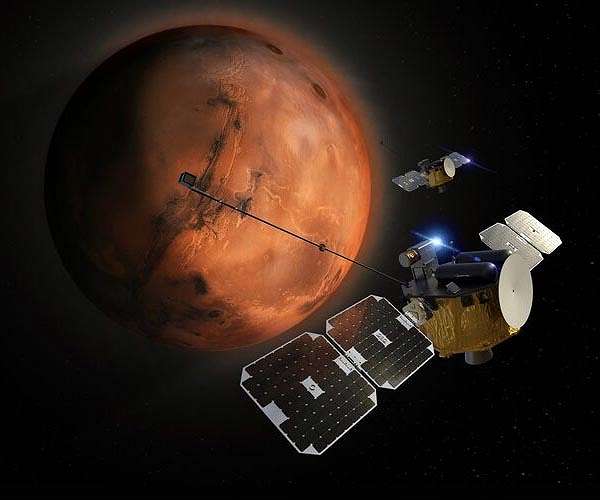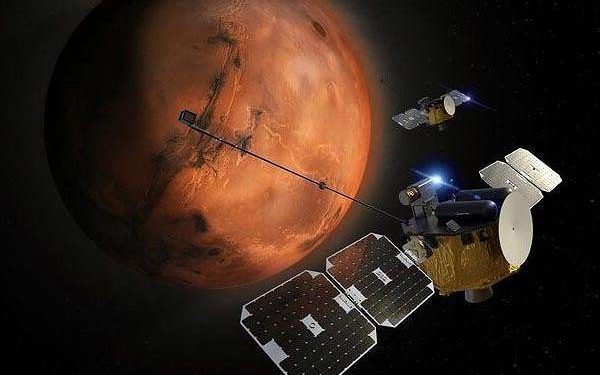
Rocket Lab Moves Into System Integration Phase for NASA’s Mars Mission
by Staff Writers
Los Angeles CA (SPX) Oct 19, 2023
Rocket Lab USA, Inc. has entered a crucial phase in its collaboration with NASA on the ESCAPADE mission, a project aiming to study Mars’ hybrid magnetosphere. The company announced that the twin spacecraft for the mission have moved into the system integration phase, aligning with a launch scheduled for 2024.
Spearheaded by Dr. Rob Lillis at the University of California, Berkeley’s Space Sciences Laboratory, the ESCAPADE (Escape and Plasma Acceleration and Dynamics Explorers) mission will deploy two spacecraft to orbit Mars. The objective is to investigate a range of factors affecting the Martian magnetosphere, including its structure, composition, variability, and dynamics. Among other goals, the mission aims to deepen our understanding of how the solar wind depletes Mars’ atmosphere, thereby shedding light on its climatic history.
The spacecraft are equipped with various instruments. These include a magnetometer for gauging the magnetic field, an electrostatic analyzer for ion and electron measurement, and a Langmuir probe to determine plasma density and measure solar extreme ultraviolet flux.
Navigating Rigorous Testing and Integration
Rocket Lab has completed the System Integration Review (SIR), ensuring the spacecraft can withstand the formidable conditions of space travel and the journey to Mars, which spans approximately 230 million miles. The team is now focusing on integrating the flight hardware, including the spacecraft bus and an array of equipment like solar arrays, star trackers, and radios, all manufactured by Rocket Lab. Instruments from UC Berkeley and other mission partners will also be added to the spacecraft.
In parallel, comprehensive testing is underway. Each spacecraft will go through an array of functional and environmental tests, including vibration and thermal vacuum trials. The tests aim to affirm that the spacecraft can operate under the extreme conditions they will face en route to and in orbit around Mars. Rocket Lab has also confirmed RF compatibility with NASA’s Deep Space Network, which will manage communication and navigation services for the mission.
A Milestone in Deep Space Exploration
“Reaching the flight integration phase for a new spacecraft is a significant milestone, especially for a complex interplanetary mission like this,” commented Peter Beck, founder and CEO of Rocket Lab. “Building on the successful delivery of a spacecraft to lunar orbit for NASA last year, it’s a privilege to be developing a spacecraft headed for deep space to perform Decadal-class science with our partners at UC Berkeley.”
The development and testing for ESCAPADE are being conducted at Rocket Lab’s Long Beach facility, which boasts a 12,000 sq. ft. cleanroom and 40,000 sq. ft. of specialized production and testing areas.
Launch and Beyond
ESCAPADE falls under NASA’s Small Innovative Missions for Planetary Exploration (SIMPLEx) program. The mission will launch in 2024 aboard a Blue Origin New Glenn rocket. After reaching low Earth orbit, Rocket Lab’s spacecraft will conduct the Mars transfer, which will include an 11-month cruise and orbit insertion. Once in orbit, they will arrange themselves into a “string of pearls” formation, setting the stage for the scientific phase set to begin in 2026.
Analyst Importance Ranking
Space and Defense Industry Analyst: 10/10
Stock and Finance Market Analyst: 8/10
Government Policy Analyst: 9/10
Space and Defense Industry Perspective:
Rocket Lab USA’s collaboration with NASA on the ESCAPADE mission signifies a key moment in private-public partnerships for space exploration. The mission, targeting Mars’ magnetosphere, is ground-breaking in that it employs twin spacecrafts loaded with high-precision instruments. This development is especially timely, given the renewed interest in Martian exploration. It resonates with a broader 25-year trend of the commercialization of space, wherein private entities like SpaceX and Blue Origin are increasingly partnering with public organizations for scientific missions.
Stock and Finance Market Analyst Perspective:
Rocket Lab’s entrance into deep-space exploration, building upon its successful lunar mission, indicates a diversification of its portfolio. This expansion has considerable implications for its valuation and attractiveness for investors. Considering the 2024 launch date, Rocket Lab may become an increasingly valuable acquisition or investment target in the lead-up to and post-mission. This corresponds with the overall bullish market sentiment around companies involved in space exploration.
Government Policy Analyst Perspective:
The ESCAPADE mission, part of NASA’s SIMPLEx program, sets a precedent for government funding and collaboration in cutting-edge scientific ventures. It marks a strategic use of public funds in leveraging private-sector efficiencies. Given the increasing international competition in space, especially with China’s growing capabilities, this mission adds a new dimension to U.S. space policy.
Comparative Analysis with Past 25 Years:
Over the past quarter-century, the space and defense sector has undergone a sea change, with privatization and international competition becoming prominent. In the ’90s, most space missions were government-funded and executed. Now, private companies not only participate but sometimes lead missions, as seen with SpaceX’s Crew Dragon. The ESCAPADE mission aligns well with these trends, reflecting both public-private partnerships and the burgeoning interest in deep-space scientific missions.
Investigative Questions for Further Analysis:
+ How does Rocket Lab’s approach to spacecraft design differ from competitors in achieving the scientific objectives of the ESCAPADE mission?
+ What are the risk mitigation strategies in place for the ESCAPADE mission, especially considering the complexities of Mars’ magnetosphere?
+ How does the mission fit into NASA’s broader Mars exploration roadmap, and what implications might it have for future missions?
+ What is the estimated ROI for Rocket Lab, considering the diversification of its portfolio into deep-space missions?
+ How does the U.S. government plan to leverage the scientific findings from the mission in its long-term space policy and international collaborations?
By triangulating perspectives from space and defense, stock and finance, and government policy, the ESCAPADE mission can be understood as a multi-faceted venture with far-reaching implications across sectors.
Related Links
Rocket Lab
Mars News and Information at MarsDaily.com
Lunar Dreams and more
